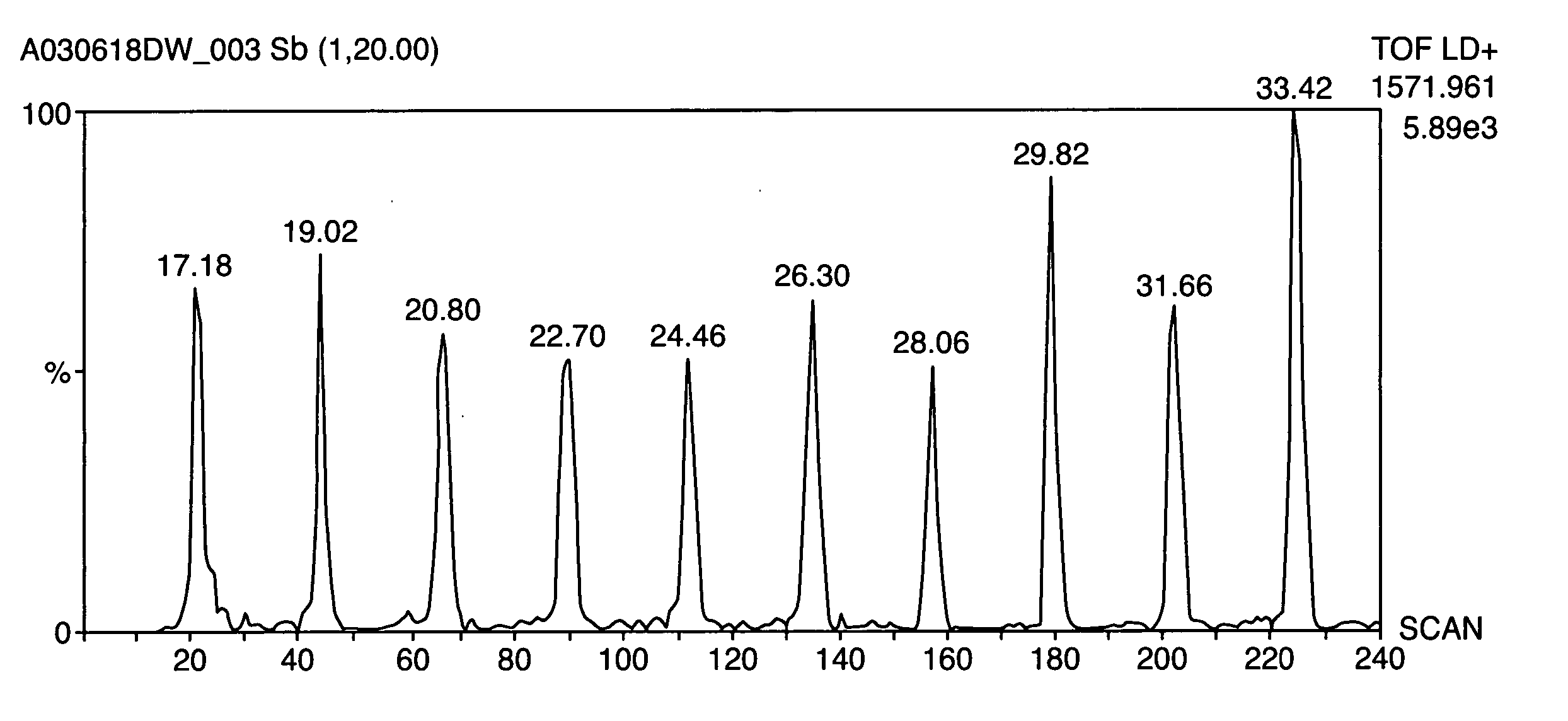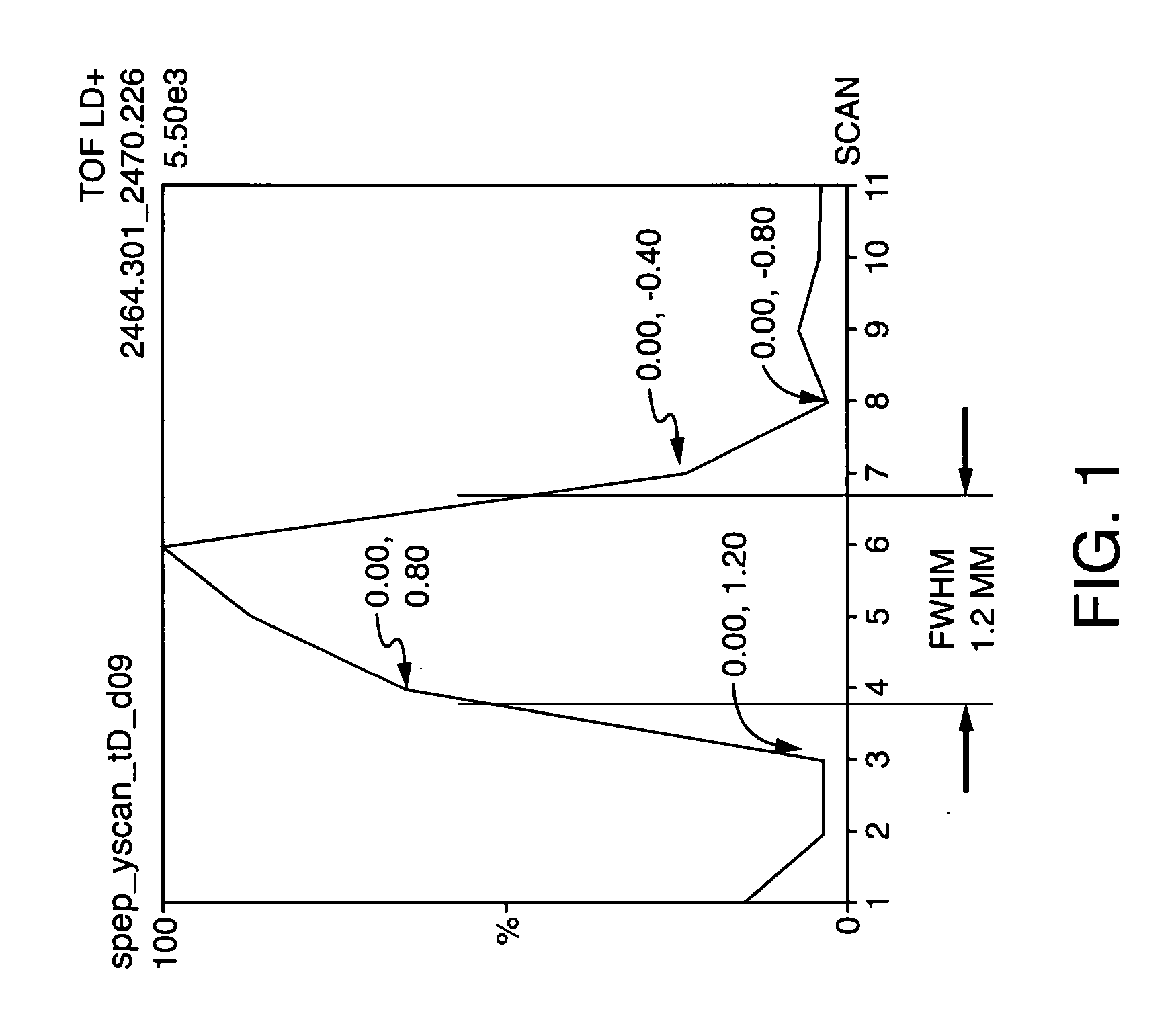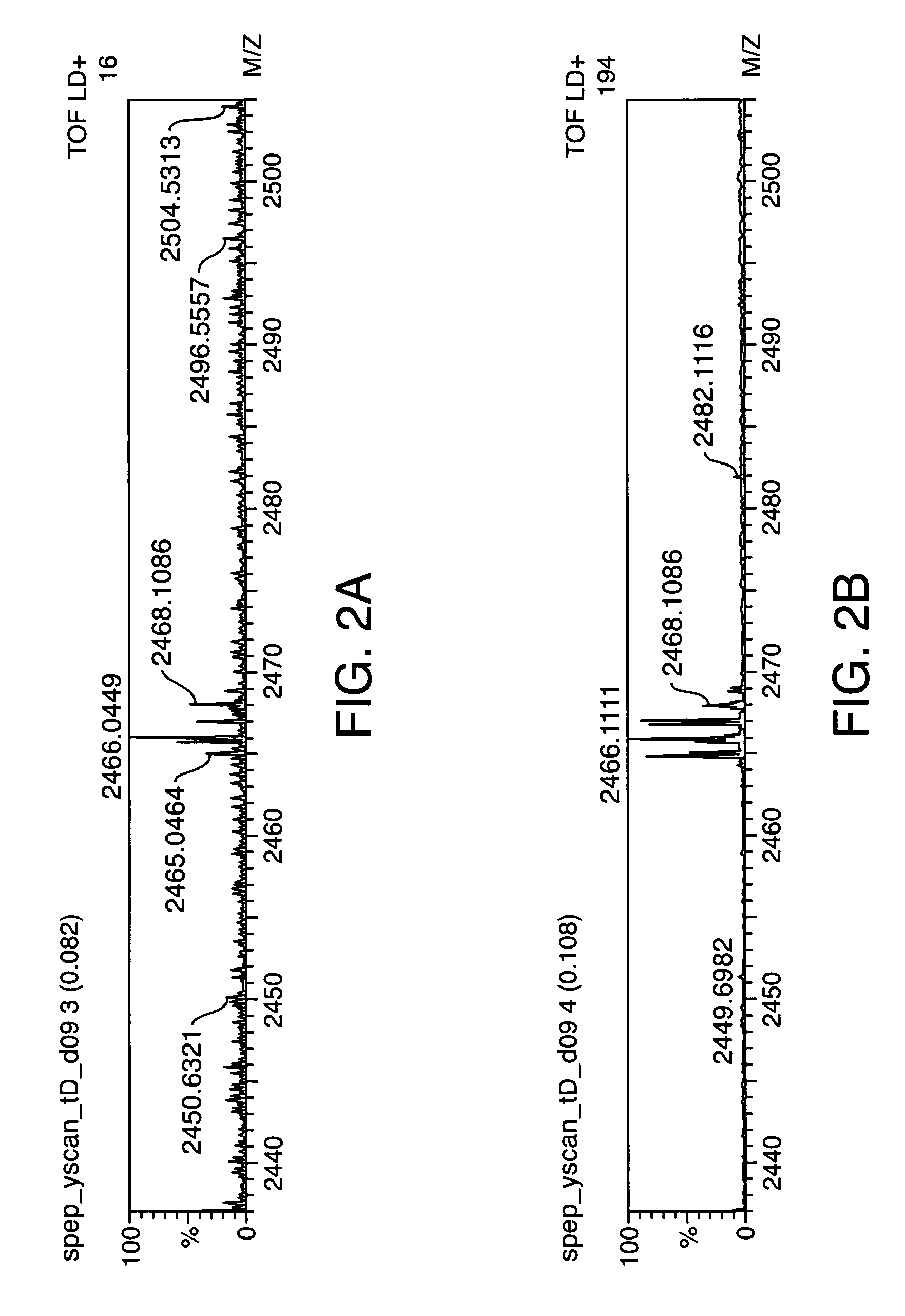Deposition of dissolved analyte to hydrophobic surfaces by desolvation of organic solvents
a technology of organic solvents and hydrophobic surfaces, which is applied in the direction of peptides, instruments, separation processes, etc., can solve the problems of maldi maldi is not generally suitable for the study of small molecules, and maldi also has significant limitations in the analysis of large molecules. , the effect of reducing the number of samples that can be deposited to one chip
- Summary
- Abstract
- Description
- Claims
- Application Information
AI Technical Summary
Benefits of technology
Problems solved by technology
Method used
Image
Examples
example 1
[0039] Standard peptides were directly infused (Harvard syringe pump) into the LC-MALDIprep (Waters) where they passed through a heated capillary nebulizer and were then deposited onto the DIOS chip in a series of adjacent tracks (4.5 mm spacing). The standard peptides (1 pmol / μL) were directly infused at a flow rate of 10 μL / min in a solution of 30% acetonitrile, 70% water, and 0.1% TFA. Temperature of desolvation was 55° C. and the nitrogen nebulizer gas was held at a pressure of 20 PSI. The distance between the nozzle and the DIOS chip was 10 mm. The stage speed during sample collection was 10 mm / min. The mass spectral analysis was done using a Micromass MALDI® instrument (Micromass UK, Ltd.). The laser was scanned across the Y-dimension of the track (spep_yscan_tD_d09) thereby measuring the width of the track (FIG. 1). The LC-MALDIprep (Waters) produces a spray of 1 mm diameter.
[0040] The data show that the sample sprayed down onto the DIOS chip was focused into a narrow sample...
example 2
[0041] The following exemplary methods of the invention were carried out using the following techniques and equipment for sample preparation and manipulation.
[0042] CapLC [0043] The CapLC was run at 3 uL / min with typical water / acetonitrile / 0.1%TFA gradient chromatography. The column used was the Symmetry C18 0.32×150 mm with 5 um particle size.
[0044] LC-MALDIprep [0045] The LC-MALDIprep was run with the original stainless steel capillary for the LCDIOS work and with the newer fused silica capillary for the direct infusion spatial focusing work. Typical nozzle temperatures were from 40 to 70 C. Typical stage speeds ranged from 2.5 to 10 mm / m in.
[0046] LC-MALDI-TOF / MS [0047] The Micromass MALDI-TOF / MS instrument (Waters) was operated using beta 5 version of SCN429 in MassLynx4.0 and MaldiAuto / PLGS2 for peptide mass fingerprinting.
Spatial Focusing
[0048] The standard peptide, Glu-fibrinopeptide B, was directly infused onto the DIOS chip using the syringe pump. The tracks and spots...
PUM
| Property | Measurement | Unit |
|---|---|---|
| angle | aaaaa | aaaaa |
| angle of contact | aaaaa | aaaaa |
| angle of contact | aaaaa | aaaaa |
Abstract
Description
Claims
Application Information
 Login to View More
Login to View More - R&D
- Intellectual Property
- Life Sciences
- Materials
- Tech Scout
- Unparalleled Data Quality
- Higher Quality Content
- 60% Fewer Hallucinations
Browse by: Latest US Patents, China's latest patents, Technical Efficacy Thesaurus, Application Domain, Technology Topic, Popular Technical Reports.
© 2025 PatSnap. All rights reserved.Legal|Privacy policy|Modern Slavery Act Transparency Statement|Sitemap|About US| Contact US: help@patsnap.com



